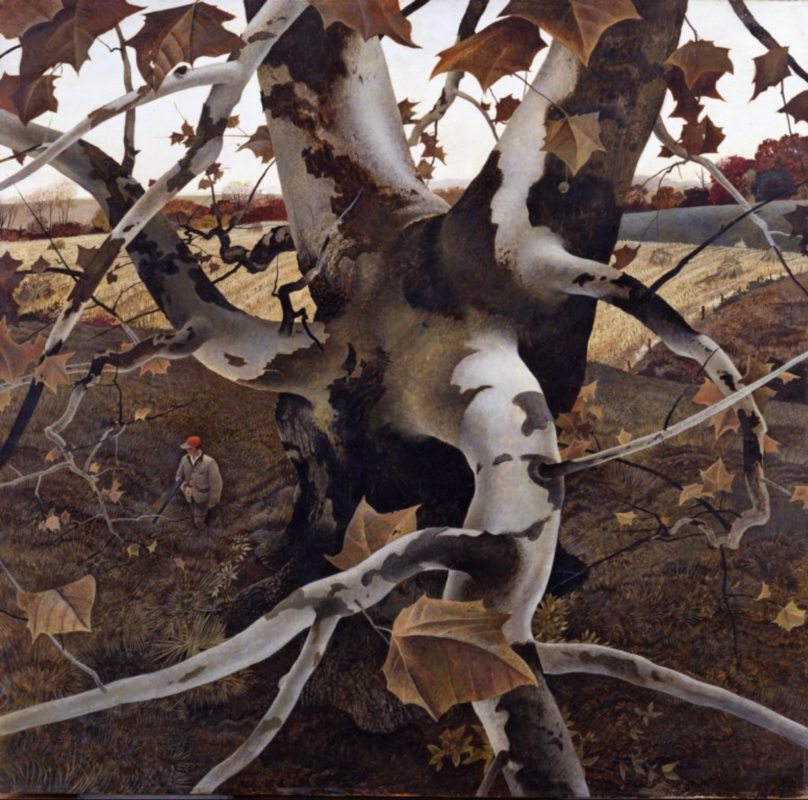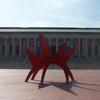More about The Hunter

Contributor
Let’s play “Where’s Waldo.” Can you find the hunter?
If it takes you more than 30 seconds to find him, then you’re in the same boat I’m in. Despite the title, the largest focus isn’t on the hunter, but on the tree that branches (ha, ha) out across every corner of the painting. The tree itself is a buttonwood tree found on the grounds of the Brookside Inn in Brandywine, which used to be the quarters of the Marquis de Lafayette during the Revolutionary War. An art museum dwells in the town now, dedicated to Andrew and the rest of his family, each of whom have made names as artists of different styles themselves.
The reason why the perspective is fish-eyed is due to who Wyeth chose as the point of view: the bird the aforementioned hunter is seeking to kill. You can feel the anticipation and terror as the hunter draws closer and closer.
Like the Renaissance masters of old, Wyeth chose tempera paints as his medium to craft this piece. Tempera paint dries quick and hard due to the egg yolk it's mixed with, as the original Last Supper by Leonardo da Vinci shows. A true master of the tempera must make their brushstrokes as small as humanly possible. This is where Wyeth’s talent as a Realist painter shines: the strokes on the painting are nearly invisible. Up close and in detail, you could almost feel the bark and see the wheat rise.
At one point The Hunter found itself as the cover of the October 18th, 1943 issue of The Saturday Evening Post, and Wyeth joined artists such as Norman Rockwell and J.C. Leyendecker, immortalized through their magazine illustrations. Unlike Rockwell and Leyendecker, who graced dozens of covers over their decades of experience, this edition was the only one Wyeth could manage to get on his repertoire.
Sources
- “Andrew Wyeth Archives | The Saturday Evening Post.” 2017. The Saturday Evening Post. The Saturday Evening Post. September 1, 2017. https://www.saturdayeveningpost.com/artists/andrew-wyeth/.
- Bernan, David M., and David C. Stacks. 1974. “Lafayette's Quarters.” Harrisburg, PA. Cultural Resource Geographic Information System. http://www.dot7.state.pa.us/CRGIS_Attachments/SiteResource/H001563_01H….
- “Nov. 4 Art Minute: Andrew Wyeth, 'The Hunter'.” 2018. The Toledo Museum of Art. March 12, 2018. https://www.toledomuseum.org/about/news/nov-4-art-minute-andrew-wyeth-h….
- “Wyeth Family Artists.” 2017. Brandywine Conservancy and Museum of Art. July 10, 2017. https://www.brandywine.org/museum/about/wyeth-family-artists.











